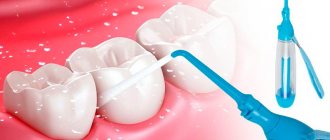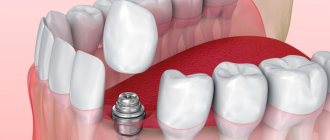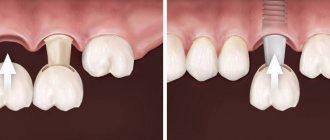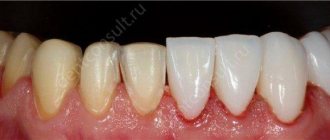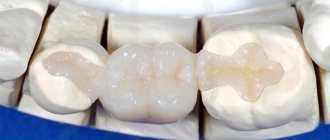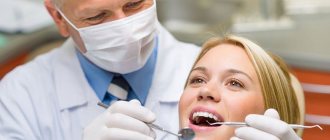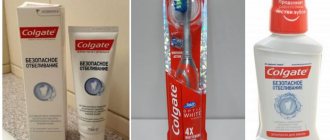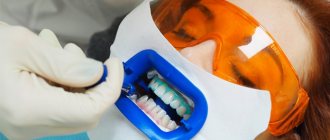Dental orthopedics combines many techniques for restoring units. Thanks to modern methods, it is possible to restore a tooth’s appearance, correct its shape and change the color of the enamel. Dental orthopedics is not only about restoring aesthetic parameters. This is essential for overall oral health. The fact is that the absence of even one unit can lead to unpleasant consequences: atrophy of the jaw tissue, displacement of teeth, the formation of gaps between units, disruption of chewing function, and so on. We will look at the benefits and what they are in more detail below.
Benefits of dental orthopedics
This direction in dentistry has several significant advantages:
- In a short period of time, aesthetic values can be restored.
- It has a reasonable price, especially when it comes to dental products that can be removed independently.
- Easy to carry out hygienic manipulations.
- You can choose different designs and select suitable fastenings.
- Any number of units can be restored, even with complete edentia.
- Dental orthopedics reduces the risk of developing bone tissue deficiency if the product involves a full load on the jaw.
- Minimum contraindications.
- Long service life. In most cases, artificial products will last more than 5 years.
- Chewing function is restored.
- The serious psychological consequences that arise from missing units can easily be avoided.
A dentist will help you decide on the type of product. The specialist will assess the condition of the oral cavity and advise (taking into account financial and physical characteristics) which design is right for you.
Caring for dentures
The basis for the health of the oral cavity, as well as the correct and long-term service of dentures, is careful hygienic care. Experts recommend brushing your teeth and removing plaque 2 times a day. To do this, you need to use a toothbrush and toothpaste, which were selected by the dentist taking into account the individual clinical situation. It is important to clean between the teeth with dental floss and also use mouthwash after meals.
Fixed dentures do not require a special cleaning method or special cleaning products - they should be cared for like regular teeth. It is enough to brush them twice a day and also use mouth rinses.
Removable dentures must be rinsed and cleaned every day with special solutions and pastes. Such a prosthesis should be stored in a special disinfectant solution. Experts recommend using fixing creams that create an airtight layer between the gums and dentures and prevent food debris from getting under the denture. It is also advisable to have your dentures professionally cleaned at least once every six months, during which plaque that is resistant to regular cleaning will be removed.
What types of dental orthopedics are there?
First of all, dental orthopedics is divided into two main areas:
- Fixed. These elements are installed in the dental office. You won't be able to remove them at home. They are fixed in various ways for a long time. Such products are removed only when absolutely necessary, also in the dental office. Experts recommend this technique in the absence of one or more units. When using these elements, you don't have to worry about artificial units falling out at the wrong time. Fixed orthopedics, as a rule, creates a more natural aesthetics than removable structures.
- Removable. From the name you can easily understand the essence of these products. In this case, we are talking about false jaws, that is, at any time a person can remove this prosthesis from the oral cavity and easily return it to its place. Most often used by older people with complete edentia.
If you want to install permanent products, then the dental clinic will offer you the following options:
- Ceramic filling or inlay. It is made from an impression in the laboratory. Used for chipped or significant tooth damage due to caries activity. This design is much better than a conventional filling and will last at least 3 years.
- Dental Crowns. They are made of ceramics, cermets or plastics. Used to restore one or more teeth.
- Dental bridge. It consists of several crowns combined into a single element. Replaces from 2 to several units, looks like a bridge supported by natural teeth.
Removable dental orthopedics, based on the material and fastening method used to create a fully removable or partially removable dental structure, is divided into the following types:
- Acrylic. Dental orthopedics using acrylic dentures is very popular. First of all, this is the cheapest option for restoring teeth. The dental element consists of a curved arch, which has a simulated part of the gum and artificial units. A significant disadvantage is the frequent occurrence of an allergic reaction to the material used.
- Nylon. This material is several points superior to acrylic, so the price is also slightly higher. More comfortable to wear, nylon is less likely to cause an allergic reaction, and is comfortable for daily wear.
- Bugelny. Metal-ceramic crowns are firmly held on a metal arch, which distinguishes it with very strong fixation. Bone tissue atrophy is excluded, since the clasp prosthesis evenly distributes the load. The best choice when restoring several missing teeth at once.
There is also a technique for restoring dentition, which is popular with most patients. Adhesive dental orthopedics is a relatively new technology in dental practice. Its peculiarity is the absence of turning of support units.
Video about types of orthopedic structures
Which removable denture is better to install?
First you need to understand what kind of design is required. Removable orthotics come in two main types: partial and complete removables.
In turn, each of these types is divided into various types, differing from each other in material of manufacture and functional features. The choice of the necessary orthopedic design mainly depends on how many teeth there are in the patient’s mouth.
Complete dentures
If there is a complete absence of teeth on one or two jaws at once, the patient is offered to have complete removable dentures installed. In addition to standard plate-based removable structures, there are also nylon dentures.
Structures made using modern methods are stronger and more durable, as well as aesthetically more attractive. With proper care and following your doctor's recommendations, dentures can serve you for many years, maintaining their original appearance and function.
Secure fixation
One of the main criteria when choosing a design is the reliability of its fixation in the oral cavity. If we talk about removable structures, the most reliable way to fix them is to install the prosthesis on implants, which are pre-screwed into the jaw bone. The disadvantage of this type of prosthetics is the high cost of dental implants.
In order to decide which version of the product to choose, you need to understand what advantages and disadvantages the design has.
Features of a nylon prosthesis
- Elasticity of the structure. Thanks to the material from which they are made, the dentures are very soft, light and flexible.
- Hygiene. Nylon dentures do not emit any odor and do not absorb moisture, so there is no accumulation of bacteria on their surface.
- Appearance. Nylon structures look very natural, matching the natural shape and color of teeth. In addition, they retain their aesthetic appearance for several years.
- Hypoallergenic. Nylon structures are biocompatible with the human body and therefore do not cause any allergic reactions.
- The disadvantages of nylon dentures include the presence of small gaps at the junction of the teeth.
Partially removable structures
If several teeth are lost, one of the options for restoring them is partial dentures. Such structures are made from a plastic base or metal frame. The main types include: plastic partially removable dentures, clasp partially removable structures and nylon orthopedic products.
Features of plastic plate structures
Plate dentures are the simplest option for restoring missing teeth. They are used both as a permanent orthopedic structure and as a temporary prosthesis. Such designs are quite easy to use and also have a low cost. The disadvantage of such designs is the long period of getting used to the prosthesis.
Clasp designs
Clasp dentures are easy to use, reliable and durable even with a long service life. Their main advantage is the correct distribution of the chewing load.
The basis of the clasp prosthesis is a frame in the form of a metal arc with elements for fastening. The prosthesis can be attached using hooks or locks that cling to the remaining teeth. The frame is made of high strength alloys.
Orthopedic structures that do not require removal
Fixed orthopedic products that can be used for the loss of one or several teeth include:
- crowns;
- bridge products;
- tabs;
- veneers;
- prosthetics on implants.
What problems can be solved with dental orthopedics?
With the help of dental orthopedics, the following problems can be solved:
- Replace missing units with a prosthesis.
- Restore a severely damaged tooth
- Restore chewing function in complete absence of teeth.
- Prevent jaw tissue atrophy.
Dental orthopedics is designed to restore lost or damaged units. If only 1-3 teeth are missing, experts recommend installing non-removable dental products. If more than 3 teeth are missing, a clasp denture can be installed. Acrylic or nylon products are most often installed in the absence of a large number of teeth; they will cost much less, but in terms of comfort and aesthetic indicators they will be inferior to more expensive analogues.
With complete edentia, there are two scenarios for the development of events.
- The most common option is to make a completely removable structure from acrylic or nylon. It's fast and inexpensive, but sometimes it causes discomfort, which, however, can be fixed.
- But, if you have a budget, then it is better to install ceramic crowns supported by implants. This option will look much more aesthetically pleasing, and most importantly, it is more reliable and does not cause inconvenience.
If there is a badly damaged tooth, it can be restored by installing a ceramic filling or inlay, which will last much longer than a composite filling.
If dental orthopedics turns you off due to the need to sharpen adjacent units, there is a way out! In this case, give preference to the adhesive method of orthopedics. This technique is more gentle and eliminates the negative impact on supporting teeth.
How does the process of dental orthopedics work?
Regardless of the type of product, any dental element must be manufactured individually, taking into account anatomical features. Dentures are made in a laboratory.
- The patient must come for the first consultation, during which the doctor will help determine the choice of type of prosthetics, and may also prescribe additional tests.
- On the same day, an x-ray is taken to assess the condition of the oral cavity and bone tissue.
- Next, the preparatory process usually begins, which includes the necessary procedures to eliminate diseases of the teeth and gums.
- Then an impression of the teeth is taken, from which the technician makes a plaster mold, on the basis of which the entire structure is cast.
- Once the prosthesis is ready, it needs to be tried on, the dentist will look at how well the structure fits, and the patient will point out the shortcomings that need to be eliminated in the laboratory.
- The final stage will be the final installation of the orthopedic structure in its place. If this is a removable denture, then the dentist will help with installation the first time, but in the future the patient will no longer need additional help and will independently cope with its installation or removal.
Types of orthopedic structures
To correctly choose a prosthesis, you need to take into account a number of factors. First of all, the product must fully restore the functions of lost teeth. Also, the choice of the type of orthopedic product depends on the patient’s preferences and financial capabilities. The doctor will tell you which option to choose.
Let's figure out what types of dentures there are.
Main types:
- metal crowns;
- metal-ceramic products;
- ceramic structures.
These products are usually manufactured in two types:
- single crowns;
- bridge structures.
Determining which type of product is better is quite difficult. Each prosthesis has its own characteristics. The main differences are price and aesthetic indicators.
Among other things, dentures are divided into two types: removable and fixed. Let's take a closer look at what removable orthopedic structures are.
Contraindications and disadvantages
Like any other medical service, dental orthopedics in general has some contraindications. However, most of them are temporary. For example, any disease of the body in the acute stage. Of course, after recovery a person can begin prosthetics.
Fixed dentures have many advantages, but there are also disadvantages:
- They have a high cost compared to the removable option.
- It is necessary to grind the supporting units. Their appearance after the procedure leaves much to be desired.
- Not suitable for all patients. There are some contraindications.
Removable:
- Visible in the oral cavity.
- They get in the way when worn and sometimes rub the gums.
- There is a risk of jaw tissue atrophy.
- Moral discomfort, the patient constantly worries that the false jaw may fall out.
- Insufficiently stable fixation.
The following indirect factors also include contraindications:
- Pregnancy and lactation period.
- Prohibition of any type of anesthesia.
- Oncological diseases.
- Nervous system disorders.
- Minor age.
- Various blood diseases.
- Human immunodeficiency virus or complex diabetes mellitus.
Please note that indirect contraindications are relevant only for fixed structures. False teeth, which can be easily removed from the oral cavity, have no indirect contraindications for manufacture and installation.
Orthoses
An orthosis is a non-invasive functional specific technical device designed to compensate or prevent biomechanical dysfunctions of the musculoskeletal system, as well as to restore its functions in case of injuries and diseases.
An orthosis (Greek orthos - correct, straight) is an orthopedic-technical auxiliary or therapeutic device of various designs, used for fixation, correction, activation of functions, improvement of the appearance of parts of the human body in their pathological condition.
Orthosis is a method of preventing anatomical and functional disorders as a result of injury and complex medical rehabilitation of sick and disabled people with the consequences of injuries and diseases of the musculoskeletal system with varying degrees of severity of musculoskeletal disorders using various types of orthoses.
Orthotics is also a type of medical care aimed at restoring the form and function of individual organs using various orthoses.
Classification of orthoses by degrees of fixation:
Light degree of fixation - limiting the volume to no more than one third of the physiological range of motion of a joint or part of the spinal column.
The average degree of fixation is a limitation of the range of motion by approximately half of the physiological range of motion of a joint or part of the spinal column.
A strong degree of fixation is a limitation of the range of motion by approximately two-thirds of the physiological range of motion of a joint or part of the spinal column.
Full degree of fixation - complete restriction of movement in a joint or part of the spinal column.
Classification of orthoses depending on the characteristics of the technical device
Elastic (bandages) - affect primarily connective tissue and epidermal formations, fascia.
Elastic - affects mainly muscles, fibrous and cartilaginous structures. The elastic effect is provided by additional elastic parts and special elastic elements.
Hinged (on an elastic or rigid basis) - affects mainly the joints and metaepiphyseal periarticular zones. The degree of impact is dosed by a special hinge device.
Hard - complex effect mainly on bone formations.
Soft non-stretchable (non-elastic) - a special group of orthoses, made from low elastic or non-stretchable textile materials.
Classification depending on the characteristics of the technical device:
A tire is a technical device made in the form of a frame or gutter with fastening cuffs.
A splint is a device for fixing and holding a limb in a certain position, made of plaster or polymer materials.
A splint is a technical device made of a solid sleeve covering the entire limb or part of it and fastening parts, designed to ensure immobility in the joint.
Braces are universal orthopedic systems designed for early rehabilitation treatment after injuries and diseases of the musculoskeletal system with hinges that regulate the range of motion.
Orthopedic devices are technical devices in the form of articulated splints, sleeves or cuffs with fastening parts, intended to compensate or restore limb function disorders.
Bandages, protectors, wristbands are orthoses made from elastic materials.
There are no contraindications for use. In cases of purulent diseases and/or skin diseases in the area where orthoses are used, consultation with the attending physician is necessary.
When contacting our clinic, an orthopedic traumatologist will always help you select and recommend the correct orthosis depending on the disease (injury), taking into account the degree and severity of the disease/injury, as well as taking into account the individual anatomical characteristics of the body.
Make an appointment with a traumatologist-orthopedist
Traumatologist-orthopedist - Titov Alexander Fedorovich
